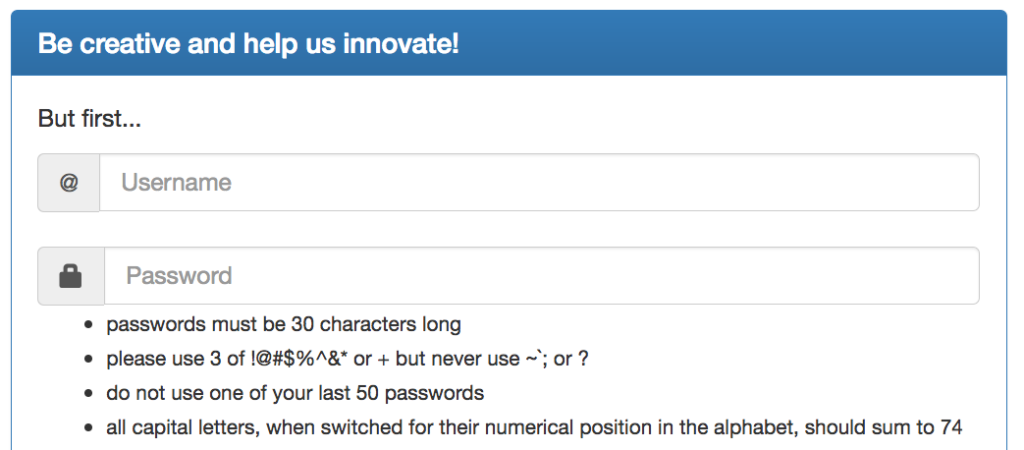Jan 31, 2017
Spark Innovation: Get 20 new ideas from your team
Innovation starts with ideation. This post describes how to get 20 new ideas from your team this week.
How Many People?
In 2016, across all of our smaller projects (less than 500 participants), The Vision Lab counted one new idea for every 2.9 invitations. If you are a smaller organization and you want 20 ideas, you will need to ask approximately 60 people. If you don’t have enough people, add incentives to get more ideas per person. The best incentive is recognition, like the opportunity to present the idea at an all-hands meeting. Recognition incentives can dramatically increase participation.
What to Ask?
Ask one question and ask for one answer. Questions like these resulted in some of our best participation rates in 2016: “What single idea could we implement that would improve our XYZ process?” and “What one innovation would allow us to differentiate against our competitor, Acme?” Also, keep your question as short as possible. Finally, if you are using a system like The Vision Lab, use seed answers to give more context. Two or three example answers will eliminate any ambiguity that a short, readable question might contain.
How to Ask?
We live in an email- and Slack-driven world. The best way to ask is through a direct request. But here are some tips:
- If possible, prime your target audience with a note from a sponsor, the higher the better.
- Ask the question in the subject of your email.
- Anonymity improves participation.
- If you use a survey tool or innovation platform, do not require account creation or login.

Registration forms: the best way to kill innovation.
When to Ask?
In our experience, there is no perfect day or hour to ask. What is clear, however, is that your communications will drive participation in bursts. Your first invitation will get a few hours of participation. A reminder the next day will cause another burst. For example, in a standard Vision Lab project we invite on Monday, remind on Wednesday and send a “time’s running out” email Friday afternoon, hours before the project ends. This process can easily be compressed, but going over one week does not greatly improve participation.
How to Prioritize?
Some innovation products, like The Vision Lab, allow participants to view and rank ideas in real time. If all you have is an inbox of new ideas, however, you need to do something else. Any prioritization process will require getting the attention of some group, so you must make it as simple as possible. Our tips:
- Assume each prioritizer only wants to spend 60 seconds on this task
- If an idea is long, summarize it. No idea should be longer than a sentence or two for this purpose.
- Keep the system simple, e.g. “Mark the three best ideas in this list and send it back to me.”
- Author anonymity will improve results.
The jury is out on whether liking is a good enough way to prioritize. The variables, like position in a list, are too numerous. Pairwise voting systems, on the other hand, are reliable and easy to use.
Innovation: Don’t Be Afraid to Ask for New Ideas
This is our most valuable advice. At every level, at every organization we work with, only good has come from asking the crowd for their input. Plus, creativity improves with exercise. If people aren’t asked to innovate, they don’t get better at it. Finally, innovation requires you to “say no to 1,000 things.” 1,000 is a big number.